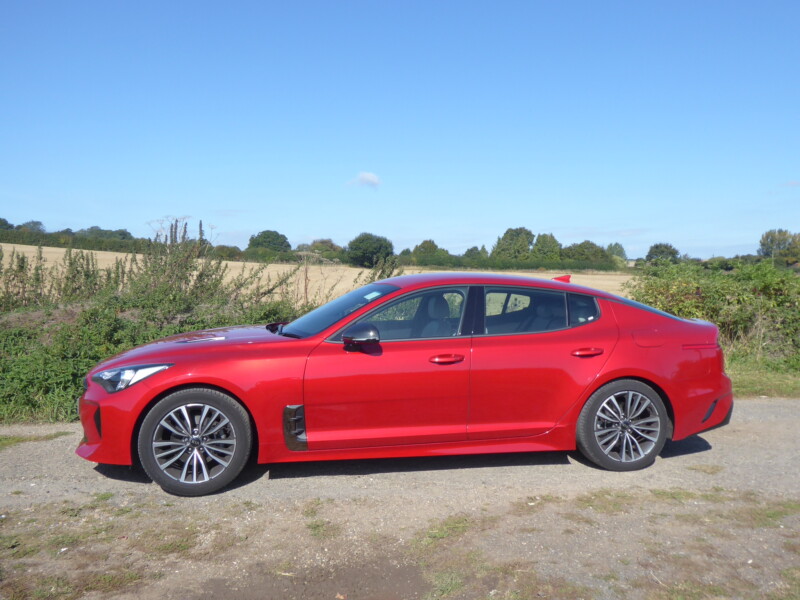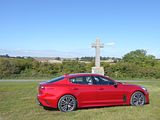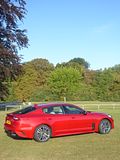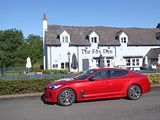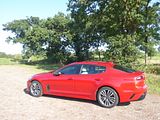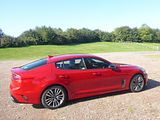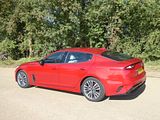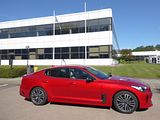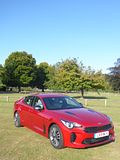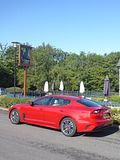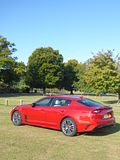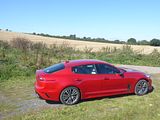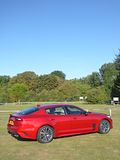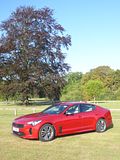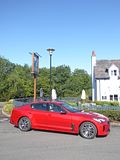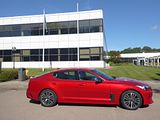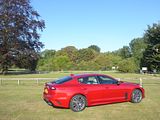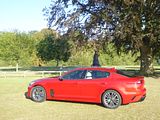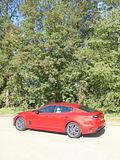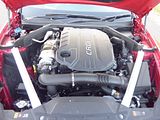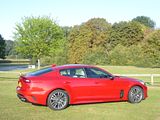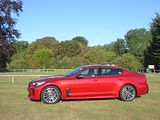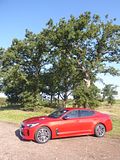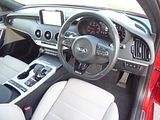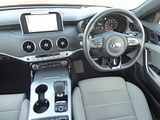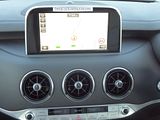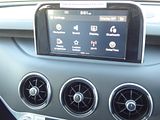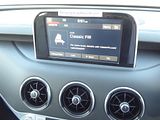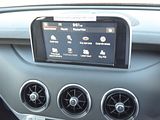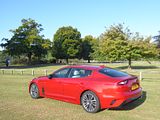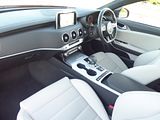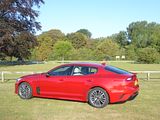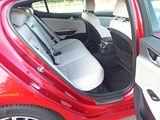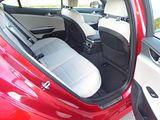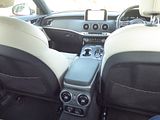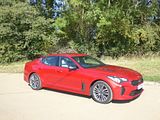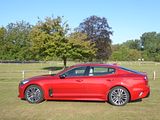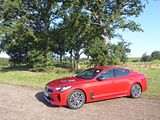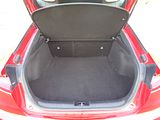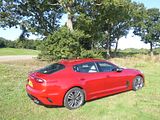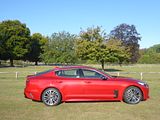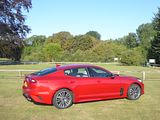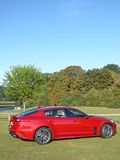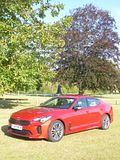Thirty years ago, Kia had only recently launched in the UK, selling what was essentially a recycled previous generation Mazda 121 and Hyundai, having been in the UK for 10 years more had a small range of saloons and hatchbacks, such as the Pony X2, Lantra and Sonata that majored on value as well with only the SCoupe having any pretence of something a little frivolous. Since that time, though, this Korean duo have grown in sales volume to become one of the automotive power-houses of the world with a vast range of models covering most sectors of the market on offer with everything from superminis to large MPVs and a full complement of crossovers. Whilst both have moved upmarket somewhat from their budget beginnings, the one sector that they’ve not really embraced are the cars aimed unashamedly at enthusiasts, be that out and out sports cars or even hot hatches. Such cars apparently do not sell in significant numbers in the home Korean market, but are considered pretty essential from an image point of view in most of the rest of the world. And so, recently, we’ve started to see what still looks like a slightly tentative toe or two in the direction of more sporty. Hyundai’s N badging on the i30 family hatch is widely viewed as being an excellent entrant to the highly competitive hot hatch class. Kia decided to go further and after tantalising us all with a very stylish concept car called the GT Concept at the 2011 Frankfurt IAA Show and another model called GT Stinger which was first shown in Detroit at the 2014 North American International Auto Show, they swallowed a brave pill and put it into production, creating a car they called Stinger. A rear wheel drive hatchback, it is clearly aimed directly at the Audi A5 Sportback and BMW 4 Series Gran Coupe, with a range of models that go from the still important 2 litre-ish diesel to a potent twin turbo model to rival the S5 and M440i. It’s a car that I’ve been very keen to try ever since its launch in early 2018, so when I saw that Hertz had added some to their UK fleet, with a booking class that is one of those “model guaranteed” ones, I made a reservation for the car, hoping I really would get one as opposed to some alternative. My luck was in and when I arrived at Heathrow there was a Stinger painted in a very attractive red that Kia call HiChroma Red waiting for me.
It would have been really nice if Hertz had bought the top spec 3.3 litre twin turbo model, but, not surprisingly, they had in fact gone for the least powerful of the three different engines on offer, the 2.2 litre diesel. It develops 197 bhp. This is a very refined unit. You could only really hear any trace of diesel noise from the outside. Inside the car, it is very quiet indeed, not just on start up, but at all times once on the move. It is also super smooth, the engine revs eagerly throughout the power band and there is lots of torque with the result that the car feels rapid, with strong acceleration available from any speed. There is an 8 speed automatic gearbox and it is well matched to the engine. It made such seamless gearchanges that you were never aware of them, and rarely knew which gear you might be using at any given time. There are column-mounted paddles if you do want to do the job yourself. Once at cruising speed, the Stinger feels particularly relaxed, with all noise sources, from engine, road and wind well suppressed, suggesting that it would be no hardship to take this car on far longer journeys than I managed to fit into the time I had the car. There are five driving modes to choose from: Eco, Comfort, Sport, Sport+ and Smart. Unlike some cars, I could definitely feel the difference in Sport, with the Stinger feeling even more urgent. Smart mode adapts things like throttle response to your driving style. Economy impressed me, too. The Stinger averaged 50 mpg whilst in my care, and at this rate there is a range of around 570 miles.
It’s not just the performance that makes the Kia a nice car to drive. This is a rear wheel drive car, designed to beat BMW at its own game, and on the ordinary road, I would say that Kia has got very close in most respects and maybe beats the German at its own game in some. The steering is well weighted and has good feel even in Comfort model and whilst a bit heavier, is even better in Sport mode. The car is nicely balanced and has excellent handling and ample reserves of grip. There is no body roll to speak of, at least on road legal speeds. There’s not even a penalty in ride quality. The test car was on 225/45 R18″ wheels, a mix of Michelin and Continentals on the test car making me guess that two of the tyres were replacements. The brakes are well up to the task of stopping the car. Visibility is about par for the course these days. The rear screen is quite small and is heavily angled, so you can’t see anything much of use when you are reversing, but there is a rear view camera and parking sensors to help you. The door mirrors tilt on reverse and on all bar the GT-Line trim there is an all-round camera to help you position the car when manoeuvering. The Stinger has the full complement of the latest safety systems to assist on long journeys including Autonomous Emergency Braking, Lane Keep Assist, Driver Attention Warning and Speed Limit Information. I did not much like the Lane Keep Assist system which endowed the car with an odd feel to the steering when it thought you were heading out of lane.
The Stinger is very nicely finished inside, trimmed with a selection of high quality materials, with plenty of soft leather and some good quality plastics. It is high quality without being excessive. There’s no wood or strange veneers, and no mixed materials fighting for your attention. Even the three central and two rear ventilation nozzles feel premium, working beautifully and reminding of the original Audi TT (in a good way). The dash layout is well designed, striking the right balance between elegance and ease of use. The leather-wrapped steering wheel has a flat bottom. There is keyless starting with a large button to the left of the wheel. The oval instrument cluster comprises two large clear dials for speedometer and rev counter with smaller gauges for fuel level and water temperature inset. A digital display for trip computer functions sits between them. There is also a head up display which projects speed and navigation directions on to the screen. I did like this feature. The steering wheel boss has buttons for cruise control and audio repeaters. The usual twin column stalks take care of indicators, wiper and lights. The touch screen is mounted high up and proved easy to use. There are some repeater buttons on the dash as well, indeed many of the car’s functions are duplicated or triplicated, which adds to the ease of use feeling. As an example, you can adjust the radio volume using a button on the wheel, the traditional volume knob in the console or a menu option on the screen. The screen includes not just a DAB radio function but also standard navigation. Both proved highly usable, though some may complain that this is not the highest quality audio system. I thought it perfectly acceptable. It has 9 speakers and a sub-woofer under the driver’s seat. More costly models get an upgraded Harman Kardon system. Below this unit are the buttons for the dual zone climate control.
All Stinger models come with high quality perforated leather seats which are pleasingly soft to the touch. There is full 8-way electric adjustment of both front seats, including lumbar support, so couple that with a wide range of positions for the telescoping steering column and it would be hard to imagine anyone failing to get comfortable. In keeping with the sporting pretensions of the car, you can sit quite low. Once you’ve found the right positioning, there are 2 memory settings to store what you found. The seats themselves are very comfortable indeed. Seat heating is included.
The low roofline of the Stinger means that you may need to duck a little when getting in the back, and once installed headroom is not the greatest though my head did clear the roofline, just. Otherwise there is plenty of space, with accommodating rear seats and plenty of leg and knee room even when the front seats are set well back. Thanks to the rear wheel drive configuration, the central tunnel is quite high and the central console unit comes back quite a way, so this is better thought of as a four seater than a five, much like its direct rivals. There is a drop down central armrest with cupholders in the upper surface. There are a pair of air vents on the rear of the centre console unit. Provision for odds and ends comes from he door bins and map pockets on the back of the front seats.
The Stinger is a hatchback and the large tailgate is on the heavy side, much as the one on my old S5 Sportback was. It covers a very large boot which is particularly long from front to back. Most people should find that there is more than enough space in here for their luggage but if you need more room, then the asymmetrically split rear seat backrests simply drop down to create a particularly long and flat load bay. Inside the cabin, you get the usual sort of provisions for odds and ends: door bins, and armrest central cubby along with cupholders and a good-sized glovebox
Kia offer the Stinger in five versions, based on three trim grades, GT-Line, GT-Line S and GT-S with a choice of three turbocharged engines. Heading the range is the GT-S, powered by a twin-turbo 365bhp 3.3-litre V6 T-GDi engine capable of taking the car from standstill to 60mph in only 4.7 seconds and on to a top speed of 168mph where allowed. The GT-S is priced from £40,495. The GT-Line and GT-Line S both offer the choice of a 244bhp 2.0-litre four-cylinder T-GDi engine or a 197bhp 2.2-litre CRDi turbodiesel capable of up to 50.4mpg. All models drive the rear wheels through an eight-speed automatic gearbox with five different shift and throttle programmes and the option of full manual control using the steering wheel-mounted paddles. All models have an 8.0-inch touchscreen navigation system with European mapping and a Traffic Messaging Channel to guide owners to wherever they feel like roaming. The screen is linked to Kia Connected Services with TomTom. The Stinger can be connected to Android Auto and Apple CarPlay via a smartphone, has Bluetooth with voice recognition and music streaming and is equipped with a reversing camera, front and rear parking sensors and a 7.0-inch Thin Film Transistor (TFT) supervision cluster. A head-up display is also a standard feature, which displays speed and navigation instruction, a first for Kia in the UK. GT-Line S and GT-S also have a 360-degree around-view monitor. Standard safety features to assist drivers on long journeys include Autonomous Emergency Braking, Lane Keep Assist, Driver Attention Warning and Speed Limit Information. GT-Line S and GT-S also have Blind Spot Detection with Rear Cross Traffic Alert, and GT-S is fitted with Brembo brakes. A limited slip differential is standard, as is an Active Bonnet to protect the heads of pedestrians in the event of a collision. GT-Line and GT-Line S have 18-inch alloy wheels with 225/45R18 tyres, while for GT-S the wheels are upgraded to 19 inches with tyres of 225/40R19 at the front and 225/35R19 at the rear. There are projection headlights on GT-Line, and full LED headlights on the other two trim grades. All versions have LED tail lamps and daytime running lights. Leather upholstery in either black, grey or red is available on all trims, and in GT-S there is Nappa leather. Eight-way power-adjustable memory front seats are fitted to all models, along with a two-way power-adjustable cushion extender. Two-way side bolster adjustment is added in GT-S. The front seats are heated, along with the outer rear seats in GT-Line S and GT-S, which also have ventilated front seats. Adding to comfort and convenience is electrically operated tilt and telescopic steering wheel adjustment as standard across all grades. There is a D-shaped leather-trimmed steering wheel and a leather and chrome gearshifter, leather on the dashboard and door armrests, an aluminium finish centre console, which also has a wireless phone charger, alloy pedals, stainless steel door scuff plates, suede headlining, dual automatic air conditioning, Smart Cruise Control with a speed limiter and a Smart Entry System with engine start/stop button. A powered tailgate is fitted to GT-Line S and GT-S. The GT-S has electronic suspension which can be set to one of five modes and variable gear ratio steering.
I thought the Stinger was an absolutely terrific car. It looks fantastic, to my eyes, and is beautifully finished inside, at least on a par with the BMW and very close to the standards set by Audi. It went well, was very economical, was both good to drive and comfortable, and the equipment levels are generous. That it costs thousands less than the German rivals, and has a much better reliability reputation than those cars and a 7 year warranty should the worst happen, should all combine to make it a no-brainer for anyone who wants a car of this type. And yet, sales almost universally, have been very disappointing. Why? There can only be one reason: badge snobbery and prejudice means that the majority of the target buyers probably cannot not bring themselves to buy something with a Korean badge on it and so don’t even try it. More fool them! As a former owner of an S5 Sportback, a car which I did enjoy, but which in its latest generation has lost appeal to me, if I wanted a car of this type, I’d take a lot of persuading not to take the Kia. It really is that good.

